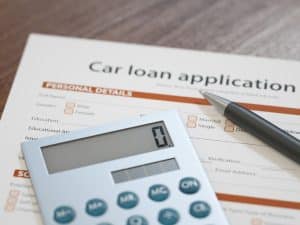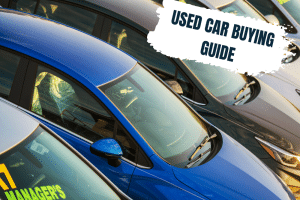
- The Savvy Promise
At Savvy, our mission is to empower you to make informed financial choices. While we maintain stringent editorial standards, this article may include mentions of products offered by our partners. Here’s how we generate income.
In this article
The end of the financial year (commonly known as EOFY) is like Christmas for the car industry. You’ll see sales dominating your television and phone screens in the weeks leading up to the new financial year, so you might think it’s a straightforward time to lock in your new car.
However, it’s important to know what to look for when you approach EOFY sales, which is where Savvy can help you out. Learn key tips to consider and pitfalls to avoid around this busy period right here in our EOFY car sales guide for 2024!
Why are EOFY car sales so important?
There are several reasons why there’s such an emphasis placed on EOFY sales. First and foremost, car dealerships and manufacturers operate based on a financial year, rather than a calendar year. In an attempt to boost their sales against their competitors, manufacturers will often offer lucrative bonuses to dealerships in return for selling off what is about to become old stock.
Additionally, reaching internal sales targets by the end of June can trigger bonuses for salespeople and dealerships, creating a strong push to move stock in the final weeks. All of this creates an environment where brands and businesses in the industry try to compete with one another to see who comes out on top.
This works, too. According to the Federal Chamber of Automotive Industries, new car sales in June 2023 hit 124,926 units, which was comfortably the highest of any month that year.
Tips for buying a car during EOFY sales
Research and compare offers thoroughly
It isn’t necessarily advisable to walk into your local dealership and buy the first car you see without first doing your due diligence. Browse online for manufacturer and dealership offers to narrow down your search.
Additionally, call up or visit multiple dealers to compare their prices and what else they’re willing to provide, such as optional extras. Some dealers will offer to beat better prices, so getting multiple quotes could be beneficial.
Search for runout or plate clearances
Dealerships will offer runout or plate clearances for cars that are dated for the previous year, meaning you could get a strong deal on a new or demo model solely based on its model year.
This is an important consideration if you’re looking to sell your car, as buying the previous year’s model will reduce its resale value. However, if you don’t have any plans to sell, opting for a runout clearance-listed model could help you save hundreds, if not thousands.
Consider demonstrator models
It isn’t all about brand-new cars, though. You could score a great deal on a demonstrator (also known as demo or ex-demo) model, which are the cars used by dealerships for test drives. These cars are near-new, with very low kilometres on the odometer, but can come with even bigger discounts in EOFY sales.
Know when to approach the dealership
It’s important to think about the fact that the closer you get to 30 June and 1 July, the more willing salespeople are likely to be to close out their deals. This could mean a further discount on the initial sale price, extra bonuses added onto your deal and more. By remaining patient throughout the EOFY period, you could nab yourself a top deal.
Keep tax benefits in mind
If you’re buying for your business, think about how purchasing your vehicle at an EOFY sale can benefit you tax-wise. Chattel mortgages offer businesses the ability to claim interest, depreciation and GST on the purchase, while car lease payments are also tax-deductible. If you’re unsure about which is the best option for you, speak with your accountant or a tax professional.
Monitor private sales
Although not always a better option, individuals looking to sell their car privately during EOFY season may be more willing to negotiate a better price to compete with dealerships and get rid of their car before 1 July.
In general, selling your car around this time isn’t advised because of the stiff competition you’ll face from dealerships and manufacturers. Having said this, there’s no harm as a buyer in keeping an eye on all parts of the market.
What to avoid during EOFY car sales
Look beyond the short-term discounts
It’s easy to get swept up in the madness of EOFY season and buy a top-line car for a much better price than you would’ve been able to get otherwise. However, it’s essential to think about the ongoing costs associated with running the car.
Is your car expensive to insure? Perhaps it isn’t fuel efficient and/or only takes high-end unleaded petrol. If you find yourself in a scrap, how accessible are spare parts for your car? Buying beyond your means could put you under more financial strain than you bargained for.
Consider what extras you really need
Salespeople looking to close out a deal might throw in a raft of inclusions for your car, which may seem like value added at the time but end up serving little purpose to you as a driver.
These extras can drive up the price of your car unnecessarily in some cases and start eating into your discount, so be wary of them before you sign on the dotted line.
Don’t get sucked into buying more than you need by the salesperson
Salespeople at dealerships, especially around this time of year, will be working frantically to meet commission and sales targets for the month and financial year. This could mean that you’re encouraged to choose a vehicle that is less suited to your budget and needs or add other products that aren’t necessary.
The simple way to combat this is to enter negotiations with a clear understanding of the type of car you want and a definitive budget. The latter can come as either a car loan pre-approval from a lender or by setting yourself a hard cap on the amount you can spend out of your savings.
Dealership finance: is it the best option for you?
When buying a new or used car from a dealership, you’ll often be asked about taking out a loan with the dealer’s in-house or partnered lender. These may appear attractive, such as coming with 1% p.a. or 0% p.a. interest and being a convenient solution for buying your car.
However, before you sign off on the loan, it’s worth understanding what your finance deal actually includes. Here are some of the areas to look out for:
- Short interest-free period: with 0% p.a. interest advertised, you may find that this is only for an introductory period, such as 12 months, after which it reverts to a higher rate.
- Inflated purchase price: even if the loan does indeed have low or no interest throughout your term, dealers may inflate the purchase price of the vehicle to compensate for the lack of interest.
- Steep fees: another area in which dealers make their money is high fees. Keep an eye out for these and ask for a comparison rate before you agree in principle to your loan.
- Balloon payments: dealers may also require you to attach a balloon payment to your loan, which is a lump sum to be paid at its conclusion. While they can help you save on monthly repayments, they’ll increase the overall cost of your loan.
According to Managing Director of Savvy Bill Tsouvalas, comparison is key when it comes to financing your car.
“Taking the time to survey the market is critical, both in terms of finding the best EOFY car deal and the loan you need to finance it”, he said.
“Comparing deals is the simplest and most effective way to save money on your car purchase.”Bill Tsouvalas, Managing Director - Savvy
If you want to learn more about your imported car finance options, you can get a quote through Savvy today and speak to one of our friendly consultants!
Did you find this page helpful?
Author
Thomas PerrottaReviewer
Bill TsouvalasPublished on April 8th, 2024
Last updated on May 2nd, 2024
Fact checked
This guide provides general information and does not consider your individual needs, finances or objectives. We do not make any recommendation or suggestion about which product is best for you based on your specific situation and we do not compare all companies in the market, or all products offered by all companies. It’s always important to consider whether professional financial, legal or taxation advice is appropriate for you before choosing or purchasing a financial product.
The content on our website is produced by experts in the field of finance and reviewed as part of our editorial guidelines. We endeavour to keep all information across our site updated with accurate information.
Approval for car loans is always subject to our lender’s terms, conditions and qualification criteria. Lenders will undertake a credit check in line with responsible lending obligations to help determine whether you’re in a position to take on the loan you’re applying for.
The interest rate, comparison rate, fees and monthly repayments will depend on factors specific to your profile, such as your financial situation, as well others, such as the loan’s size and your chosen repayment term. Costs such as broker fees, redraw fees or early repayment fees, and cost savings such as fee waivers, aren’t included in the comparison rate but may influence the cost of the loan. Different terms, fees or other loan amounts may result in a different comparison rate.









